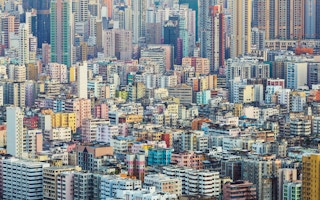If there was any doubt in your mind about the onslaught of climate change to our survival on this planet, the 2015 Paris Agreement provides strong consensus that the problem is very real. It demands the immediate and collective action of governments, the private sector, you, and me.
Keep in mind that while climate change is seen mostly as an environmental problem, it is more accurately a social problem. With careful planning, greening cities leads to the efficient use and conservation of finite resources, protects the environment, and effects change in the mentality of its residents toward more responsible, sustainable choices.
Cities are the economic engine rooms of Asia, but—both directly and indirectly—they make a similar contribution to greenhouse gas emissions, air pollution alone can slash GDP growth by about 2-4 per cent. Cities are also land-, energy- and water-intensive, and with urban populations expected to grow at an exponential rate in the coming years, Asian cities will be the main contributors to pollution costs over the next 20 years if nothing is done.
So how can these cities sustain rapidly growing populations without further wreaking havoc on the environment and depleting resources, while still maintaining their competitive edge, and remain great places to live?
Urban densification, or increasing the number of dwelling units and mixed-use spaces per acre, is the key to tapping into the potential of cities to become part of the solution to climate change because it encourages efficiency and conservation.
It is a critical aspect of making a city more sustainable and environmentally friendly. By being more organized and filling in vacant lots with shared spaces, cities can efficiently deliver water, electricity, and other municipal services to more people in a small amount of space using fewer resources and less energy.
For example, in a well-designed dense neighborhood not only will utilities be able to deliver water to more people, they will also require less energy and resources to do so. Conserving energy, in turn, conserves water. It takes 100,000 gallons of water to produce one megawatt hour of electricity – unless you are using wind or solar energy, which requires much less. The more energy we conserve, the less water we use.
Urban densification, or increasing the number of dwelling units and mixed-use spaces per acre, is the key to tapping into the potential of cities to become part of the solution to climate change because it encourages efficiency and conservation.
In carefully planned urban densification, places where people live, work, play, shop, and learn are within convenient distances from each other. This encourages walking, biking, and public transportation. With the need for private cars and petrol reduced or even eliminated, the city becomes a better place to live because it becomes rightfully built for people, not cars. The air is cleaner and people are generally healthier.
Densification also connects communities and promotes social cohesion. Let’s not forget the city’s raison d’etre are its people. Social psychology suggests that building a greener city leads to greener mindsets in its citizens for two reasons.
First, it underscores the consensus about climate change that gets more individuals to act on the problem, ensuing a change in behavior. The Paris consensus eliminated what social psychologists call the “bystander effect: if no one acts, onlookers may believe there is no need to act, and may therefore themselves refrain from acting.
In this case, when we see few individuals doing anything about climate change or hear political opponents argue over whether it is a real threat, it’s easy to plead ignorance for inaction.
The Paris Agreement and the response of countries to the call for green cities sends a strong signal to people that there is indeed a problem—an emergency, if you will—that everyone must address immediately. This consequently leads individuals to make more responsible, sustainable choices because now they are confident that their actions are surely part of a shared effort, large enough to actually make a difference – and it would.
Second, while the greener city jumpstarts citizen awareness on the need for more sustainable living, densification fosters a sense of community with a greener mindset that catapults it towards its sustainability goals. People start making better choices that help combat climate change, like demanding products and services that are environmentally friendly.
Each city has a vision of what it wants to look like in 20-30 years: more energy-efficient, less carbon-intensive and aspiring to zero waste. This is why much attention should be given to a city’s density. The goals of the Paris Agreement may seem, to some, ambitious and difficult to achieve, yet they are not impossible.
Vital to our efforts to save ourselves from ourselves is a revolution, which begins with a collective change of mindset that leads to a change in behavior. The people have to want it. And greening cities with carefully planned densification is one of the social catalysts toward such end.
Amy Leung is deputy director general, East Asia Department, Asian Development Bank. This post is republished from the Asian Development Bank blog.


















